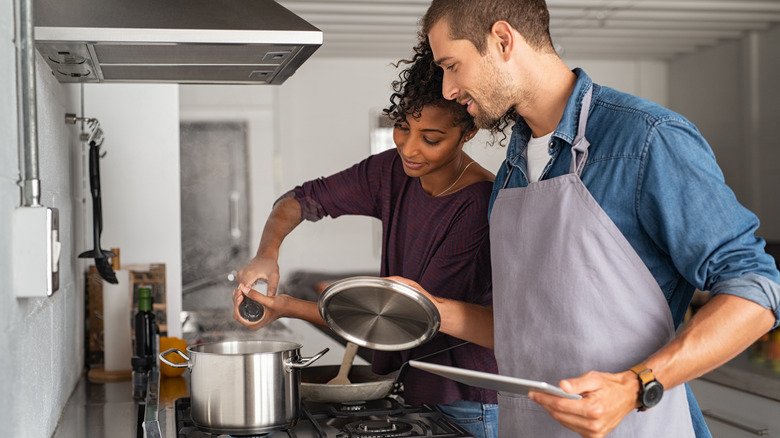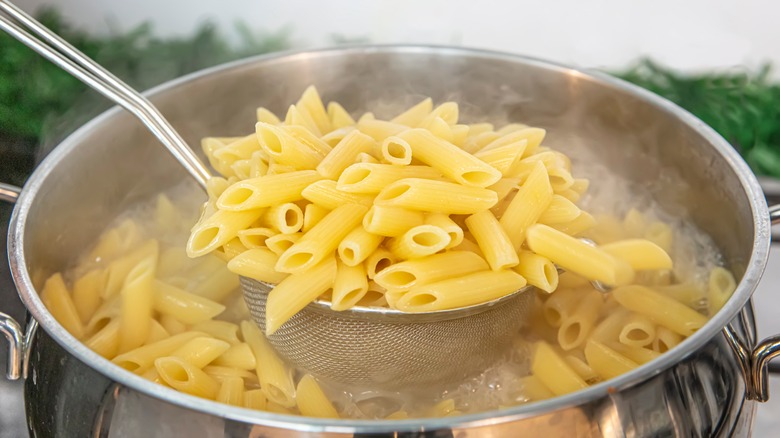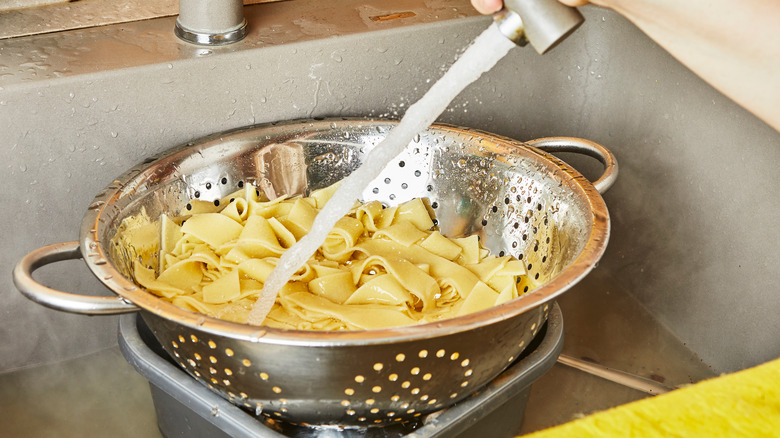The Salt Tweak You Need When Cooking Pasta Used For Cold Salads
Pasta may be one of the world's most contested ingredients. What is the best shape? What sauce is right for which noodle? And the popular dilemma, what does al dente really mean? Wherever one falls in the many various noodle debates, there is one thing that really is important when cooking pasta, and that is salting the pasta water. This helps to bring out the flavor of the pasta and improves the finished texture.
This is even more important when you are using noodles in a dish like pasta salad. When prepping pasta to be served cold, you should double the amount of salt in the water. Yes, double. That is because when food is served cold rather than hot, it tastes totally different. The flavor simply does not come through enough once chilled unless a larger amount of salt is used. And every good pasta salad starts with great-tasting pasta.
It's okay to get salty
The all-important addition of salt can be clearly broken down into three parts: how much salt to add to the water, when to add it to the pasta pot, and what kind of salt should be used. Thoroughly salting the pasta water brings the flavor of the noodles to life and provides a great foundation for any dish.
You can use a few types of salt in your go-to pasta water. Sea salt, kosher salt, and pretty much any salt other than iodized salt (which can impart an unpleasant metallic taste) should work well. However, the type of salt you use determines how much of it you should use. If using kosher or sea salt, it's often recommended to add one tablespoon per gallon of water. If you use table salt, cut the ratio down to one tablespoon per gallon. When adding the salt, add it after the water is boiling but before the pasta is added, to make sure the salt dissolves completely. And remember, however much salt you typically use, it is vital to double that amount for cold pasta salad.
Perfectly cooked pasta
However the pasta salad gets made, there are additional steps you can take to ensure the resulting dish is it's most delicious. After making sure your pasta is cooked in properly salted water, it is important to cook the noodles a little more than usual, just past al dente. About a minute or so longer than the package directions should cook them to the perfect texture for chilling. This ensures that when the noodles inevitably stiffen a bit in the fridge they don't get overly hard.
After the pasta is cooked, it is important to rinse the noodles quickly so the pasta stops cooking and does not retain extra unwanted starch. The final step to perfect pasta salad involves quickly cooling the noodles so they don't get mushy. This can be easily done by spreading the noodles out on a pre-chilled cookie sheet, tossing in a bit of oil so they don't stick, and allowing them to cool.


